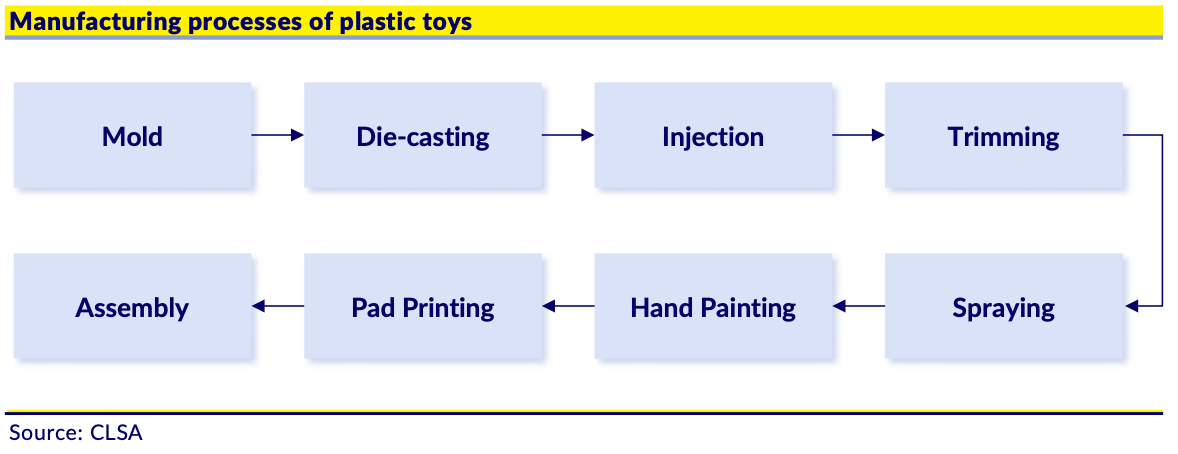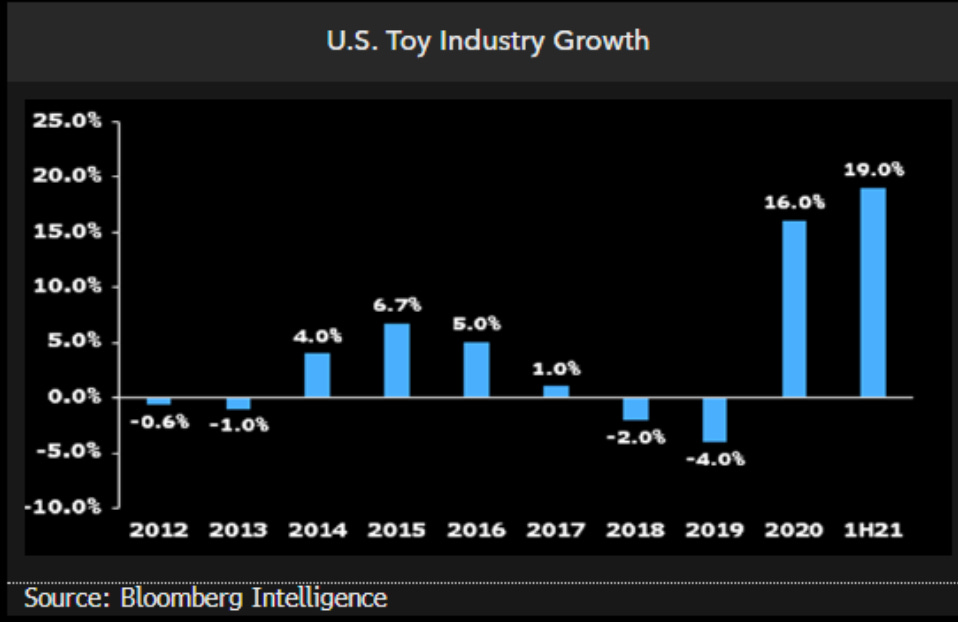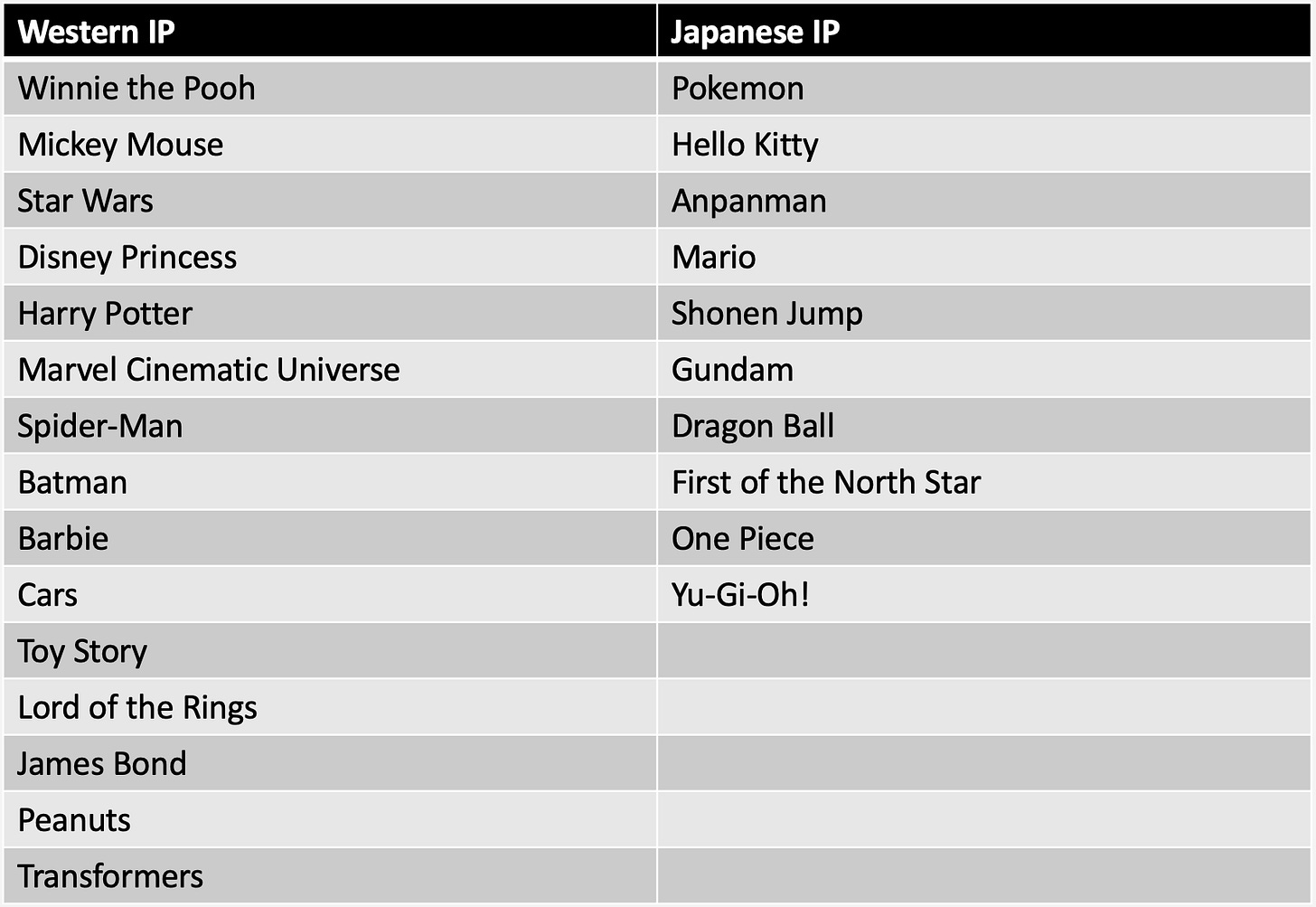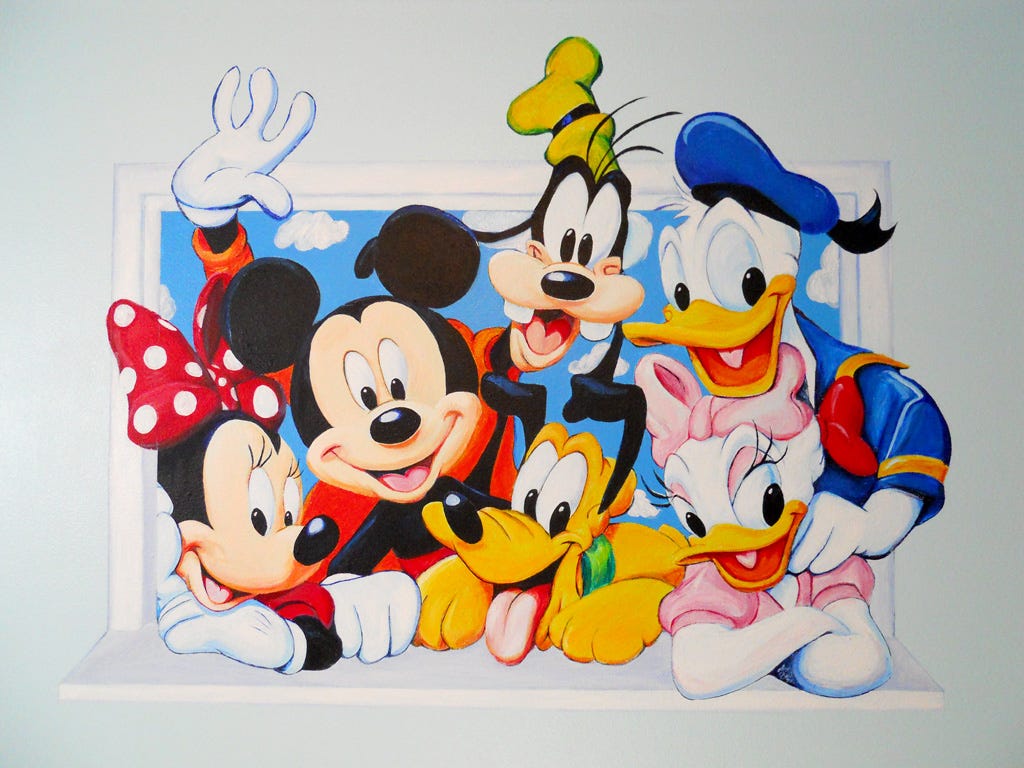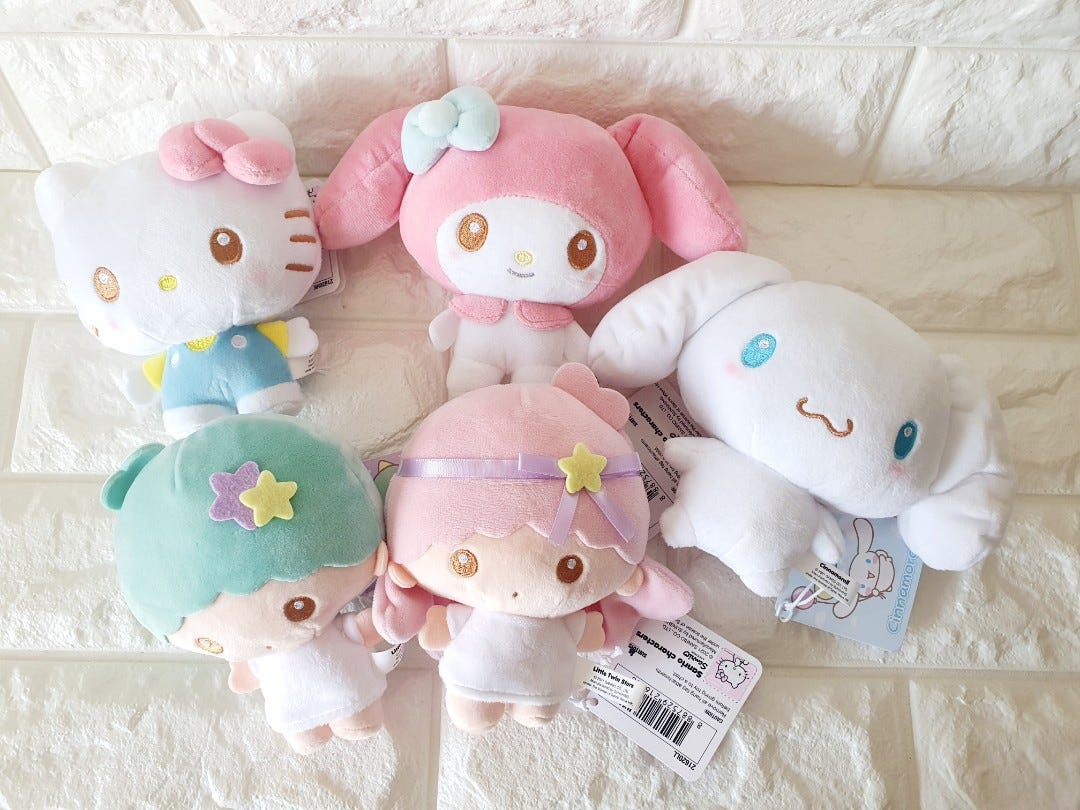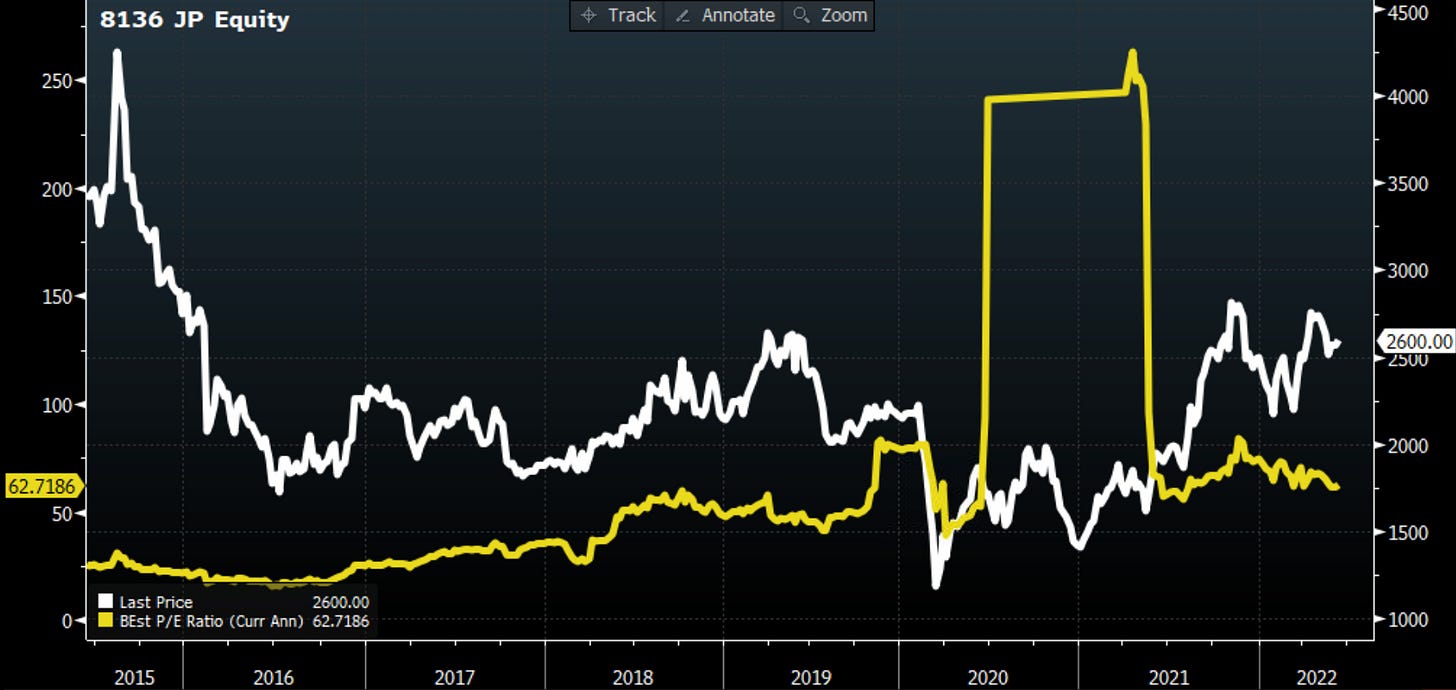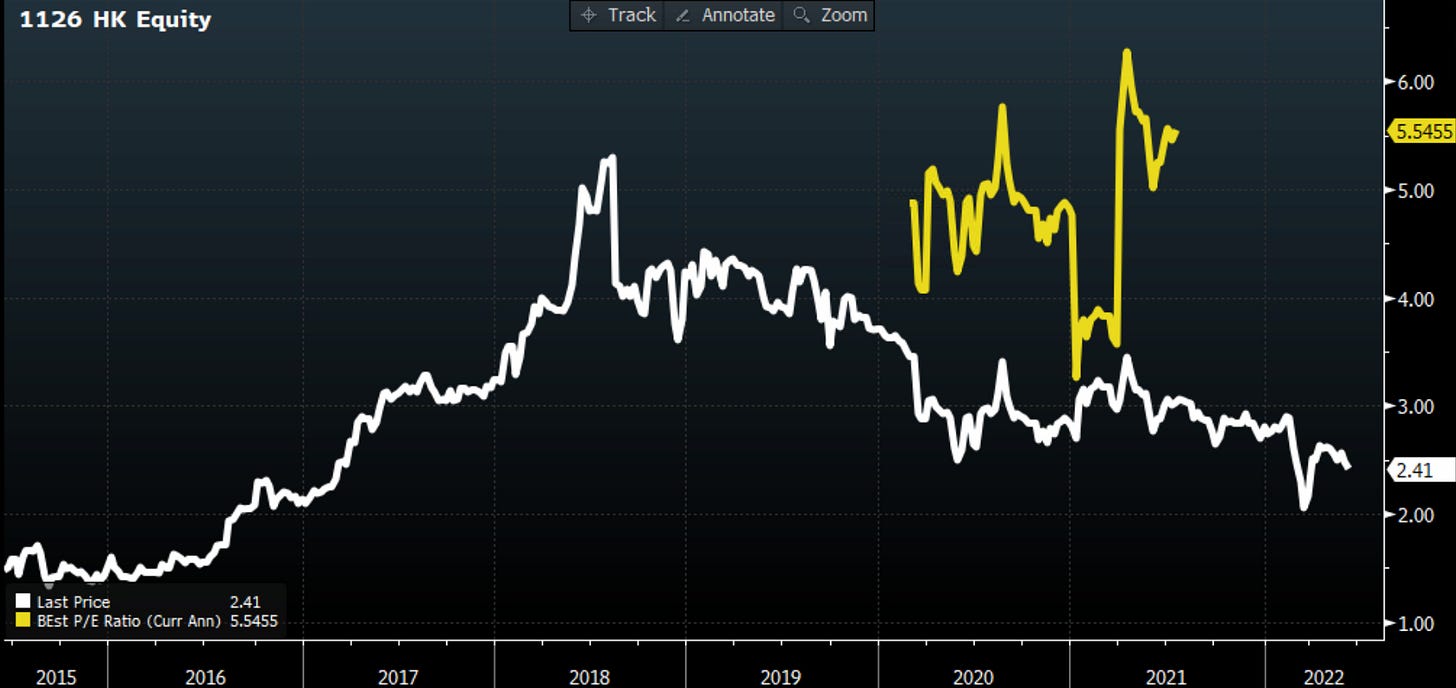Mapping Asia's toy industry
Asia's toy OEMs are small but strong. Estimated reading time: 19 minutes.
Disclaimer: Asian Century Stocks uses information sources believed to be reliable, but their accuracy cannot be guaranteed. The information contained in this publication is not intended to constitute individual investment advice and is not designed to meet your personal financial situation. The opinions expressed in such publications are those of the publisher and are subject to change without notice. You are advised to discuss your investment options with your financial advisers. Consult your financial adviser to understand whether any investment is suitable for your specific needs. From time to time, I may have positions in the securities covered in the articles on this website. This is not a recommendation to buy or sell stocks.
Summary
The toy industry is mature and driven by fads. While some toy franchises have lasted for decades, others fade away after just 3-4 years. Toy companies need constant innovation to stay ahead of the game.
A product begins with the creation and development of intellectual property, such as cartoon characters. These are then marketed through cinema, Netflix and video games. This intellectual property is then licensed to companies producing physical toys, such as action figures. Finally, the toys are sold through supermarkets, specialised stores or e-commerce.
Right now, some of the hottest toy franchises are Funko Pop figures and toys based on Sanrio’s Kuromi and Bandai Namco’s One Piece.
While toy production is commoditised, a few Asian OEMs have managed to earn a decent return on capital through penny-pinching. I’m thinking primarily of Dream International and Vtech.
1. Introduction to the toy industry
The toy industry is a sub-segment of the broader youth entertainment industry. But there’s increasingly an overlap between these categories, for example, with manga and anime that eventually become toy action figures.
1.1. History of toys
Children’s play patterns have not changed much over time. Egyptian dolls have been found, as have balls, wooden models of animals, spinning tops, etc. Board games were observed in ancient Greece and puzzles in Ancient Persia.
Chinese board games such as Mahjong, Xiangqi, and Go originated in China around 1,300-2,500 years ago.
Following the industrial revolution, children had more spare time on their hands. Toys such as kites, soap bubbles, toy wagons, spinning wheels, hoops, puppets, dolls, puzzles, board games and cards became popular.
From the mid-20th century, plastic toys have become cheap and ubiquitous. Examples include lego plastic bricks. And after the war, you also saw the emergence of brand-name toys such as Barbie Dolls and Action Man.
Here is a list from the Strong Museum of Play of the most popular toys in America over the past 50 years:
Some of these toys were unique enough to have staying power, including Jenga and Rubik’s Cube. Others, such as Tamagotchi, were made obsolete by newer technology. Some were pure fads and disappeared after a few years - Beanie Babies, Bratz and Hatchimals included.
1.2. Key toy categories
The best classification of toys I’ve found is the following 14 categories:
In alphabetical order:
Action figures: Made from plastic and based on characters from a comic book, motion picture or video game that children trust and can relate to. Examples include Star Wars and The leading companies in action figures include Hasbro, Bandai Namco, Geobra Brandstätter and Mattel.
Board games: Targeted towards older individuals, offering challenges similar to puzzles but with a competitive element between the players. Examples include Monopoly, Dungeons & Dragons and Trivial Pursuit.
Card games: Similar to board games, they are a type of competitive play where the aim is to outdo the opponent. Examples include Uno and Poker.
Collectibles: Collecting provides a treasure hunt experience, with the scarcity of particular items elevating their perceived value and an urge to complete a collection.
Construction toys: Sets of standardised pieces that allow for the construction of different models. Examples include Lego, Meccano, Play-Doh and Marble Run.
Dexterity toys: Toys that offer challenges regarding the fine motor skills needed to master them. Examples include fidget spinners and yo-yos.
Dolls: Small models of humans used in pretend play. Examples include American Girl, Barbie and Cabbage Patch Kids.
Educational toys: Toys purchased with the intent to teach children necessary skills. Examples include LeapFrog and educational tablet devices.
Interactive toys: They use electronics and coding to create interactive toys. Examples include modern video games, Tamagotchi and robot pets.
Pet toys: These toys play on the cuteness factor, invoking an urge among children to care for the toy. Examples include My Little Pony and ZhuZhu Pets.
Physical play: Outdoor toys that enable you to engage in competitive play. Examples include laser tag, frisbees, kites, water guns and roller skates.
Pretend play: Mimicking the behaviour of adults through pretend toys. Examples include tea sets and doll houses.
Puzzles: A game that tests a person’s knowledge or ingenuity. Examples include Rubik’s Cube, Jenga and jigsaw puzzles.
Vehicles: Miniature representations of cars that can drive around on surfaces. Examples include Hot Wheels and Tonka.
From what I’ve been able to tell, collectibles, action figures, pet toys, dexterity toys and dolls are more fad-driven than construction toys, puzzles, card games and board games.
In the United States, the most significant parts of the toy market include dolls, outdoor & sports toys and infant toys. In Japan, I believe that action figures are far more prominent.
The general trend is that board games, puzzles, vehicles, and physical outdoor play have given way to interactive toys such as electronic and robot pets and video games:
But physical toys are not going to disappear. Pet (plush) toys, infant toys, construction toys and action figures.
Growth in the industry is hard to come by. And volumes will deteriorate as birth rates continue to fall. The Asia-Pacific region grows faster than Western markets. But growth for an individual company will usually come from market share gains.
1.3. The industry supply chain
Here is a toy industry supply chain map:
Brand owners license out intellectual property (IP) for the production of toys such as dolls, action figures, building blocks, brick toys, model vehicles and soft toys. Producers of toys then pay a percentage of the sales price in royalties to IP owners. Toy companies such as Hasbro own intellectual property, as do film studios such as Marvel.
Since the end of the Second World War, toy manufacturing has moved to Asia, first to Japan, then Hong Kong and later to mainland China. Today, roughly 70% of all physical toys are produced in China, specifically in the Pearl River Delta of China’s Guangdong province.
And in the past 15 years, factories have been increasingly moving to Vietnam because of the country’s even-lower labour costs. Just like in the textile industry, you’ll be at a competitive disadvantage if you are not in Vietnam.
The manufacturing of plastic toys is simple. You source raw material (PVC), heat and later freeze it. Then you feed it into plastic injection moulding machines that create the final product.
One trend in manufacturing toys is an increased focus on safety and environmental concerns. Companies such as Melissa & Doug that focus on wood and metal have gained share from manufacturers of plastic toys, especially those made from carcinogenic PVC.
The biggest sales channels for toys remain speciality retailers (35% of the total in 2018), followed by supermarkets (25%), mixed retailers such as department stores (18%) and lastly, e-commerce (20%).
Since 2018, the share of toys sold via e-commerce channels has risen, and it’s by far the most significant share of toy retailing in developed markets such as the United States.
The toy industry is more or less recession-proof. Toys are the last item that parents skimp on - even during recessions.
The toy industry has experienced strong tailwinds during COVID-19 as families stayed at home and parents purchased toys to entertain their children. This growth is most likely to reverse as consumers focus on more experience-driven activities outside their homes. Sales at duty-free shops and theme parks have suffered though and could well rebound.
Prices for raw materials have risen more recently, driven by higher prices for paper & pulp and petrochemicals and higher shipping costs. Those higher prices are hitting the margins of the OEMs.
2. Toy industry success factors
Here are the common factors that I’ve found explain the success of specific toy franchises:
2.1. Relentless CEO
There’s a novelty element in every toy product that eventually wears off. So constant innovation is required, driven by a CEO that’s just relentless. Some of the CEOs that stand out to me in the toy industry include:
Melissa And Doug Bernstein of Melissa and Doug
Ronnen Harary of Spin Master
Jørgen Vig Knudstorp, formerly of Lego
Bob Iger, formerly of The Walt Disney Company
Brian Mariotti of Funko
Kyoo Yoon Choi of Dream International
Allan Wong of VTech

2.2. Products evoking strong emotional reactions
You’ll want toys to invoke an emotional reaction for the buyer. For example, via:
Cuteness: The big glossy eyes of Beanie Babies and the human-like features of the Hello Kitty cat are meant to remind us of cute babies.
Surprise elements: Hatchimals, Kinder Eggs and Pop Mart blind boxes have surprise elements since customers never know what they will get.
Empowerment: Pretend-play and action figures enable children to feel as powerful as adults or their favourite action hero. Competitive board games make the player feel intelligent once they beat their opponents. And players feel smart once they solve a puzzle.
Scarcity: Scarcity increases the perceived value of specific items. Manufactured scarcity is a key strategy, especially in the collector’s market.
Urge to complete collection: Collecting is also about wanting to get closer to the goal of a complete collection, requiring you to spend a lot of money in the process.
2.3. Owning recognisable IP
The highest-grossing intellectual properties in history are predominantly American or Japanese. Children relate to the characters they see in TV shows and then purchase toys they feel familiar with. Owners of key intellectual property possess significant bargaining power.
Most of the American characters in the list above are related to Hollywood movie franchises from Disney, Marvel, Warner Bros or Universal Pictures.
Japanese intellectual property is a world of its own. It’s centred around manga (Japanese-style comic books) and anime (Japanese-style animation). Key owners of Japanese IP include Nintendo, Sanrio, Sega Sammy, Bandai Namco, and Hitotsubashi.
2.4. Low customer acquisition cost
Most toy franchises end up lasting no longer than 3-4 years. If the product is unique enough, some have staying power beyond this period.
One explanation for the short time span of specific franchises is that children learn about particular toys from their friends, i.e. word-of-mouth marketing.
Children are also introduced to intellectual property through movies. And increasingly, Netflix show. If a particular movie franchise becomes a success, then the production of toys in the subsequent 2-3 years is likely to follow. As Ronnen Harary of Spin Master said in a recent podcast:
“A cartoon is a 22 minute advertisement for a toy”
A case in point: the Star Wars BB-8 robot toy released following the “Star Wars: The Force Awakens” became the toy of the year 2015.
Another anecdote: when Netflix relaunched My Little Pony on Netflix, Hasbro’s My Little Pony-related toy sales increased over 100%.
Here is how I picture the “fly-wheel” of monetising IP across movies and television, video games, theme parks and physical toys. Companies engaged in several of these activities are likely to see synergies among them. Disney is the perfect example of such a company.
2.5. Strong inventory management
Since there is significant seasonality in the toy industry, specifically with regard to Christmas, managing inventory properly is critical for both retailers and toy producers.
Here are the Google search queries for the key word “Buy toy”. You can clearly tell from the chart that a large portion of toy sales happen around Christmas. So the timing of movies and Netflix shows is also important, to make sure that a particular piece of intellectual property is popular around the key Christmas season.
3. Mapping Asia’s toy industry
The largest toy companies globally are Denmark’s Lego and America’s Hasbro and Mattel.
Check out Amazon’s top 100 toys list to understand what types of toys are popular right now. In short, Disney characters are hot, as are Lego blocks, Barbie, Sesame Street and Hasbro’s Transformers.
Another way to gauge the popularity of individual toys is by tracking Google search queries via Google Trends.
If you do this exercise right now, you’ll find that the biggest success story over the past few years has been Funko Pop and Paw Patrol. One Piece (whose related toys are produced by Bandai Namco) is seeing a resurgence, as are Sanrio franchises Hello Kitty and Kuromi.
Here is a map of the listed universe of toy stocks across North America, Europe and Asia.
In Western countries, the toy market is dominated by Lego, Hasbro, Mattel and Spin Master, and the two smaller competitors, Funko and Jakks Pacific.
In Europe, the investable universe is limited to toy retailers Games Workshop in the UK and diversified retailer Jumbo SA in Greece.
Within Asia, you’ll find Japanese IP owners Bandai Namco, Nintendo and Sanrio. Japan’s leading physical toy maker is Tomy (formerly Tomy Takara). Pop Mart is a Chinese retailer of “blind boxes” of pop figures, with some of its IP sourced from third parties and some proprietary.
Then you have toy “OEMs” (manufacturers) based around the Pearl River Delta and Vietnam, including educational toy specialist Vtech, plush toy and action figures maker Dream International, and Teenage Mutant Ninja Turtles action figure maker Playmates. Other listed Asian toy OEMs that I, for various reasons, have chosen not to focus on include Matrix Holdings, Alpha Group and Shanghai Yaoji.
3.1. Bandai Namco (7832 JP)
Bandai Namco is a diversified Japanese entertainment company exposed to video games and the physical toy market (almost a 50/50 split). In its video game segment, it is a publisher for games released on consoles such as Sony’s Playstation and Microsoft’s Xbox. In its toy segment, it produces plastic models such as action figures.
Bandai Namco's key IPs are Gundam, Dragon Ball, Power Rangers, Pac-Man, Tamagotchi and One Piece, which are long-lasting franchises that continue to deliver. Since 2015, Bandai Namco has embarked on a strategy of monetising its IP (the “IP Axis Strategy”). That monetisation includes using the IP for video games, toys and music. From what I can tell, several Bandai Namco’s franchises, such as One Piece and Pac-Man, are performing well.
The forward P/E ratio of 24.6x and EV/EBIT of 15.6x is what you would expect given the company’s growth profile.
3.2. Sanrio (8136 JP)
Sanrio is a designer, licensor and producer of cute consumer products. It owns brand names such as Hello Kitty, My Melody, Gudetama and Kuromi. Hello Kitty alone is the second-most valuable media franchise of all time. It both sells products directly and licenses out its characters to third parties. It also runs two theme parks in Japan. The margins can be incredible once a character becomes successful and there’s demand from third parties to license it.
The business was taken over by the third-generation leader Tomokuni Tsuji in 2019, and there are now early signs of a turnaround after years of mismanagement. He started new collaborations with clothing brands, app makers and game studios. There’s also a new Hello Kitty movie planned for 2024. The new Kuromi character is doing well in China.
The stock is challenging to value, but on 2023 numbers, Sanrio is at 3.7x revenues. Expect ~20-30% operating margins if a successful turnaround takes place.
My previous write-up on Sanrio from May 2021 can be found here:
3.3. Tomy (7867 JP)
Tomy is an “old-school” Japanese toy maker formed as a merger between Tomy and Takara. It sells toys, card games, baby care products, and to a lesser extent, video games and apparel. Some key brands include Tomica cars, Plarail model trains, Licca-chan dolls and Koeda-chan plastic figures. It remains heavily Japan-focused, with 60% of revenues from Japan.
The stock trades at 12.4x P/E and 7.1x EV/EBIT on 2023e consensus numbers. While the 2021 results were strong, they most likely reflected unsustainable demand from consumers staying indoors during COVID-19. The longer-term demand for model cars and trains is weakening on a secular basis.
3.4. Vtech (303 HK)
VTech is a Hong Kong-based educational toy manufacturer with two key brand names, VTech and Leapfrog. The company is focusing on the faster-growing Asian toy market, though the largest customer remains Wal-Mart. It also has an export OEM assembly business for medical, health, home appliance and audio equipment. The third segment produces VoIP phones for businesses. The company is family-run, with the original 1976 founder Allan Wong still in charge.
The company is unusual in how generous it is with dividends, in the clarity of investor disclosure and high return on equity of 25%. The acquisition of San Francisco-based Leapfrog was also an intelligent move from a capital allocation point of view.
The stock trades at 10.0x 2023e P/E, 8.7x 2023e EV/EBIT and a forward-looking 9.8% dividend yield.
3.5. Dream International (1126 HK)
Dream International is the largest plush toy manufacturer in the world. It’s also a significant producer of plastic figures such as Funko Pops, and plastic figures have now become the largest segment. The company also produces scooters.
Roughly 71% of its revenues come from North America, and it has disproportionate exposure to Funko, Disneyland, Spin Master and Build-a-bear. The plush business is mature, though it has been hurt by weak theme park attendance during COVID-19.
Nineteen of Dreams’ production facilities are in Vietnam and another four in China. The vast majority of employees are based in Vietnam. COVID-19 disruptions in Vietnam raised manufacturing costs somewhat during 2021, and rising oil prices have hurt margins further. But having a significant exposure to Vietnam compared to China provides Dream with a competitive advantage.
The stock trades at 8.4x trailing P/E and 3.3x 2019 earnings, with a strong balance sheet and positive cash flows.
Check out @GlobalStockPick’s blog post on Dream International here.
3.6. Playmates (869 HK)
Playmates is a Hong Kong-based toy-maker, initially focused on dolls and toys for infants. It had a major success in 1988 producing Teenage Mutant Ninja Turtles action figures, which it continues to hold a license for. The company experienced a revival with the 2012-2017 Nickelodeon TV show “Teenage Mutant Ninja Turtles” and the 2014 Hollywood movie with the same name. It also has a few number other franchises such as Ben10, Voltron and Godzilla vs Kong, but the Teenage Mutant Ninja Turtles franchise remains the company’s key cash cow.
Today, the stock is a net-net, with a market cap of US$81 million and net cash of US$121 million. On 5 August 2022, an 82-minute Netflix movie called “Rise of the Teenage Mutant Ninja Turtles: The Movie” will be released. This movie may or may not revive the Teenage Mutant Ninja Turtles franchise. But thanks to Playmates’ variable cost structure, the cash burn will likely be minimal.
Corporate governance is a question mark. Playmates Toys is controlled by separately listed Playmates Holdings. The holding company has just been taken over by Michael Chan, the founder's son. He has an excellent pedigree, having worked at KKR and Citigroup with a degree from Yale. But with two separately listed companies, can the interests of Playmates Toys minority shareholders be safeguarded?
3.7. Pop Mart (9992 HK)
Pop Mart is a Chinese companying the trend for “pop toys”. One of Pop Mart’s most popular products is their so-called blind boxes, where the buyer doesn’t know what they will get, providing a surprise element to the purchase. The company has some proprietary IP, and the rest is licensed from third parties on either an exclusive or non-exclusive basis. The product reminds me of the Funko pop toys that have become popular over the past five years thanks to recognisable IP and a cuteness factor. As of late 2021, the company had 295 retail stores and 1870 smaller fully automated “robo-shops” around the world.
The company has expanded overseas, but the return on capital has fallen drastically in the process. The numbers look very odd to me. Pop Mart’s 25% operating margins seem high given its reliance on products licensed from third parties. Its closest peer Funko has a 9% operating margin. That said, I visited a Pop Mart store in Singapore this week (Funan), and it was jam-packed with customers.
On 2023e consensus numbers, the stock trades at 23.8x P/E and 16.1x EV/EBIT.
4. Valuations
I’m biased toward founder-led companies such as Spin Master (Ronnen Harary), Dream International (Kyoo Yoon Choi) and Vtech (Allan Wong). The toy industry is cutthroat, and these individuals have proven themselves. It’s not easy to build up a company from scratch.
Here is the top-line growth for each of the companies mentioned above. Spin Master’s growth has been driven by the success of Paw Patrol but also an active M&A strategy, which may or may be value-accretive. Dream International has been adding on new customers and riding on the success of its key customers, Spin Master and Funko. Bandai Namco’s growth is driven by an active strategy to monetise its IP, and I believe it’s executing well on that strategy.
Vtech has historically traded at 13-14x P/E compared to the current 10.0x level and offers a 10% dividend yield. It’s a slow-growth company, at best.
Dream International has two near-term issues: a high oil price and COVID-19 disruptions to theme park attendance. I think both of these problems will get solved in due time, though the path to recovery remains unclear. With a pre-pandemic P/E of 3.4x, in a full-recovery scenario, it would trade at a significant discount to its historical average P/E of 7.8x.
Playmates’ fundamentals may improve somewhat following the release of the new Teenage Mutant Ninja Turtles movie on Netflix in August. The downside appears limited, given that the company is trading at a negative enterprise value.
Sanrio is trickier to value. Once a character becomes famous, licensing revenue can cause revenues and margins to expand significantly. It is clear that both Hello Kitty and Kuromi are seeing a surge in consumer interest, and that bodes well for the future.
Another takeaway from the above comps table is that the margins are low for most toy manufacturers. The ones enjoying above-average margins either 1) produce video games 2) control valuable intellectual property or 3) are toy retailers. Perhaps those are the areas capturing most of the value in the toy industry supply chain.
5. Conclusion
After reading up on the industry and the specific companies mentioned above, I’m personally intrigued by Dream International. I’m almost certain that theme park attendance will recover at some point. I like founder-led companies, and Kyoo Yoon Choi has proven himself.
In my view, Sanrio, Vtech and Bandai Namco are best classified as growth-at-a-reasonable price.
Playmates Toys could be an attractive bet on a revival of the Teenage Mutant Ninja Turtles franchise, assuming one can get comfortable with the company’s corporate governance.














